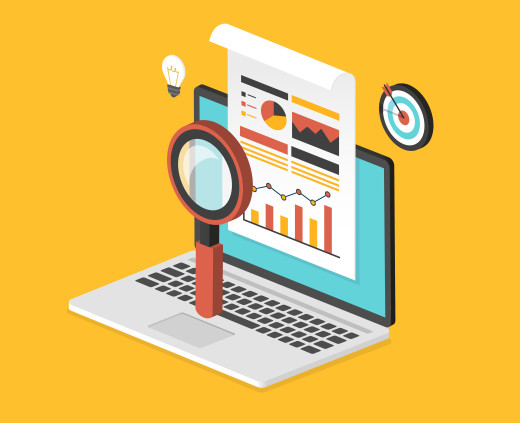
Thanks to the technological advances in data-driven marketing, today more than ever, marketers have a wealth of data at their disposal. This crucial information informs brand campaigns and strategies at every turn. And as many marketers can attest, the influx of customer data that is now suddenly available means an even greater pressure to make data pay off with visible results with Data Management Platforms (DMPs).
Before you foray into the world of DMPs, it’s important to understand exactly what it is and how you can reap the rewards. Consider this your primer on one of the most innovative and fastest growing areas of marketing today.
What are data management platforms?
A DMP is software that absorbs, sorts and stores any kind of information about users (eg. behavior, interests, browsing platform and so on) and segments it into useful information for marketers, publishers and other businesses.
This information is then segmented into different groups which can be used to better target specific audiences in online ads. Using this, marketers can optimize future media buying and create ads with a more centralized focus, developing a deeper understanding of the customer.
According to one of the pioneering DMPs, [x+1] (now called RocketFuel), a DMP:
. . . provides the requisite, yet somewhat unnoticed, function of data collection, translation, classification, indexing and storage. It’s the ‘plumbing’ part of data-driven marketing online.
DMPs in motion
When launching a social media campaign, it is crucial to get the right targeting in order to achieve valuable engagements with your ads.

In order to match campaign ads to a valuable audience, data is needed to assess which audience would be better suited depending on their demographics (geographic locations, age, gender), interests (food, parenting, sports, art), behaviors (such as types of links they click on, what types of videos they see, video uploads and downloads, video completion, etc) and actions throughout the internet.
Some DMPs even offer cross platform services which allows you to track potential audience/consumers across different devices and platforms.
Access a complete data set
DMPs provide the benefit of providing robust data, comprising of:
First party data: Information that is collected through a direct relationship with a consumer. This information is very important because it is specific information such as email addresses and online behaviors of your existing consumers. This valuable information comes into play when creating retargeting campaigns for Facebook and site retargeting (the ads that follow you around after visiting a site offering products or services for purchase).
Second party data: This is information that has already been accumulated by a similar company and then bought to be brought into your database. For example: a luxury watch company selling their data list to a yacht seller. These lists provide data that has already been segmented into appropriate audiences which allows for a more productive campaign strategy.
Third party data: This is information collected without direct consumer relations based on behaviors, demographics, and contextual targeting online. This is massive amounts of data that is not unique to one company and can be bought by many different competitors.

How can marketers benefit from DMPs?
-
Understand your audience: DMP’s enable you to unlock insights about your audience and target them in various ways based on insights you obtain like demographics, behaviour, location and interests, consumptions habits and many more. By putting this vital information at the center of your advertising strategy, marketers are able to run ads that are highly exposed to the most relevant audiences at the best time.
-
Organize data: Your DMP imports data by structuring information from different systems and then organizing it at the customer level, if it pertains to your customers, or at the cookie level, if the user is unknown. The information structured or pulled from different systems could be any characteristic pertaining to your customer or unknown user; it could be their customer ID, email address, their buying or search history, or anything that could help structure the message you are trying to target to them. Data integration is the first step in being able to do all this, and the ability of the DMP to combine data from different sources gives marketers today a huge advantage in driving better results.
-
Interpret the sheer influx of data: As a marketer, there’s nothing more frustrating than receiving information from different sources (eg. online and offline data); and not being able to interpret what’s being said. The beauty of DMP’s it that they have the capability to take this fragmented audience data and break it down. This enables marketers to make actual sense of the data and create an actionable strategy. Decoding this crucial information is no longer a chore for the in-house IT department, which don’t always have the capacity to implement complex solutions.
-
Find your audience across multiple platforms: Once your DMP has gathered and made sense of all this robust data, it starts to look for segments, also known as ‘audiences’ in the DMP world. Marketers are able to seek out these particular segments by setting parameters for their target audience (e.g. females in New York over 30 who use an iPhone). With so many different platforms people use today, DMP’s enable marketers to create effective ad campaigns by targeting segments on any platform.
-
Retargeting: In the online world of advertising, knowing who your audience is can make the difference between a successful campaign and a silent shot in the dark. Knowing an audience’s behaviors and preferences online can help a marketer reach them on a more productive level. For instance, metrics such as seeing how often a user frequents an online store to browse can enable a marketer to know who to remind to return and finalize their purchase throughout their time online through their ad placement.
-
Data Integration: A major advantage of the Data Management Platform is its data integration capability. Generally, data integration in DMPs work by combining 1st party and 3rd party data (to be defined still). Remember that the data combined is what is used for segmentation. From there, the software then targets specific users you as a marketer are hoping to sell online ads to. The more data you have, the better the context you are working from in order for you to eventually target those specific users for your online ads.
-
Putting all the information to meaningful use: Finally, DMP’s will use all the above information it has received to inform actions like who to target, the message to to send, where and even the channel or device. Having such robust information based on real findings then helps marketers fine-tune their marketing strategies across every stage.
As you can see, DMPs pose a wealth of opportunities for brands to drive more powerful campaigns which allow online targeting to become an essential part of a digital marketer’s arsenal.
Through DMPs, marketers, digital media publishers and other businesses have found an innovative backbone for their data-driven marketing. They are still an evolving sphere that you, as a marketer can’t afford to overlook. Increasing response rates, eliminating wasted ad spend and a gaining a more robust customer understanding are just some of the key ways DMPs can bolster your marketing strategy.
Get the TNW newsletter
Get the most important tech news in your inbox each week.





